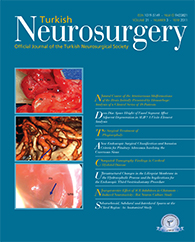2Kasturba Medical College, Manipal University,Department of Pathology, Mangalore, India
3Kasturba Medical College, Manipal University, Department of Anatomy, Mangalore, India DOI : 10.5137/1019-5149.JTN.3927-10.2 AIM: To note the morphological variations and morphometric details of foramina ovale in dry adult skulls of Indian origin.
MATERIAL and METHODS: 82 dry adult human skulls of unknown sex and of Indian origin were obtained and variations in appearance and number of foramen ovale were noted. The length and width of the foramina ovale of both sides were determined using digital Vernier calipers and area (A) was also calculated and analyzed.
RESULTS: Out of 82 adult skulls, the values for the right side was 7.64 ± 1.194 mm, 5.128 ± 0.827 mm and 30.808 ± 7.545 mm2 and for the left side the values was 7.561 ± 1.123 mm, 5.244 ± 0.950mm and 31.310 ± 8.262 mm2 respectively, for the mean length, width and area of the foramen ovale. The shape of foramen was typically ovale in most of the skulls (56.70%) with some bony variations such as spine, tubercles etc.
CONCLUSION: There was no statistically significant difference between the two sides in length, width and area of foramen ovale and there was a positive correlation between lengths and areas of both sides.
Keywords : Foramen ovale, Morphology, Morphometry, Skull, Sphenoid




